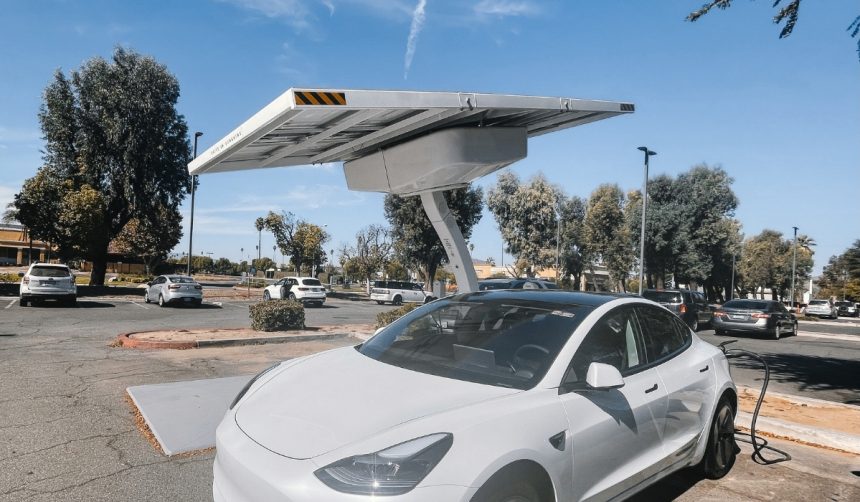Automotive enthusiasts and industry watchers have turned their attention to the Tesla Model Y Performance, which was recently observed navigating the Nurburgring circuit in Germany. Wrapped in camouflage, this updated version is stirring discussion about the potential features and performance capabilities Tesla aims to integrate into its best-selling SUV. Witnessing a next-generation vehicle at such a challenging test site suggests Tesla is evaluating the Model Y Performance’s dynamics under demanding conditions. The Model Y has consistently drawn global attention as its various trims set benchmarks in the electric vehicle sector, and its anticipated enhancements offer a glimpse into Tesla’s ongoing commitment to refining its products.
Tesla’s use of the Nurburgring for testing echoes earlier development cycles, notably those involving the Model S Plaid and Model 3 Performance. Public sightings of test mules have often preceded announcements about enhanced aerodynamics and track-focused features. Feedback from previous Model Y releases highlighted evolutionary upgrades, such as improved battery ranges and interior updates, rather than fundamental shifts in chassis design or high-performance equipment. Current leaks and visual evidence now point toward more substantive performance-centric changes than past iterations, marking a potential shift in Tesla’s rollout strategy.
What Are the Standout Features on the Updated Model Y Performance?
The camouflaged test vehicle exhibited updates including larger 21-inch wheels, revised brakes, and a carbon fiber spoiler. Photographs and on-site reporting also indicate bucket seats that closely resemble the Model Y L seats launched in China, along with new performance badging and reworked front and rear bumpers. Suspension modifications, particularly the inclusion of adaptive dampers, signal Tesla’s effort to enhance handling for spirited driving. These upgrades focus on optimizing both driving experience and the vehicle’s aesthetic appeal.
How Do Expected Performance Metrics Compare to Previous Versions?
Projections for the new Model Y Performance suggest an output of approximately 510 horsepower and a 0–60 mph acceleration time potentially between 3.2 to 3.4 seconds. These figures would represent incremental improvements over the previous Model Y Performance, which was rated at 503 horsepower and achieved 0–60 mph in 3.5 seconds. Anticipated range is estimated at 280–290 miles, with the addition of a new Track Mode expected to further differentiate the vehicle from non-performance trims. Observers predict top speed enhancements as well, though precise data is pending confirmation.
When Is the Release Expected and What Has Tesla Said?
An official timeline for the launch has not been disclosed, though company executives have indicated a late 2025 target. Tesla’s Chief Designer, Franz von Holzhausen, stated,
“We’re working on delivering the Model Y Performance with upgrades customers have asked for.”
Lars Moravy, Vice President of Vehicle Engineering at Tesla, added,
“Testing at Nurburgring gives us critical data for final tuning of the new Performance variant.”
Until Tesla provides specific release dates and specifications, speculation will persist about the final production configuration and markets for initial rollout.
The Model Y Performance’s testing phase clearly signals Tesla’s intent to retain a competitive edge in the electric SUV market by focusing on performance and design. While past updates to Model Y largely involved incremental range improvements and aesthetic refinements, the current crop of observed changes indicates a stronger emphasis on vehicle dynamics, rider experience, and track agility. For buyers interested in high-performance electric vehicles, these developments could provide worthwhile incentives to consider waiting for the updated Model Y Performance. Those unfamiliar with performance testing can note that the Nurburgring remains a preferred venue to gauge both everyday usability and limit-handling in new automotive releases. When considering electric SUVs, understanding the role of performance trims can offer valuable perspective, as these versions typically set the tone for broader enhancements across a manufacturer’s lineup.










